Mostar is a charming Balkan city with great food and beautiful nature. It’s surrounded by mountains and the Neretva River flows through the center. There are flowers and fruit trees everywhere.
Mostar is a special place for me because I met my boyfriend here. This is his hometown and we met when we he was visiting home and I was traveling. We came back again together and I was lucky to get a local’s perspective on Mostar and Herzegovina.
You can take a day trip to Mostar from nearby Balkan cities, but it’s worth staying here longer. These are my favorite things to do in Mostar, plus other things you should know.
Things to Do in Mostar
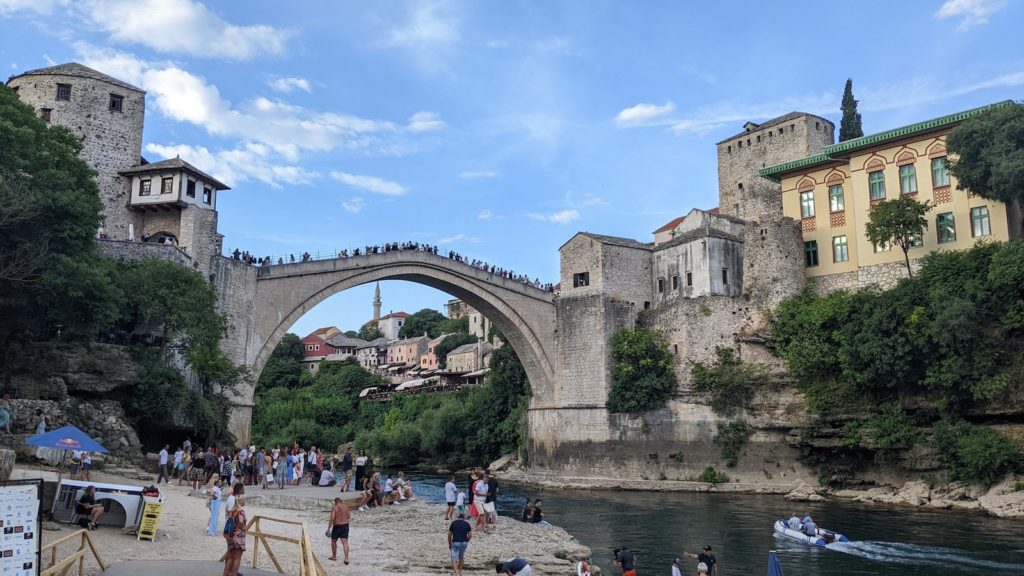
1. Watch divers jump from Stari Most (the Old Bridge).
Stari Most is at the center of Mostar. This stunning bridge was originally built by Ottomans in the 16th century. It was destroyed during the war and rebuilt.
The bridge is one of the highest in Europe at 23 meters. You’ll see divers jumping off the bridge. These are professional divers who know the proper technique to dive safely.
If tourists want to jump off the bridge, they have to go to the divers club first to learn the technique and practice off the nearby platforms.
Stari Most crosses the river Neretva, one of the coldest rivers in Europe. The water can be 7 degrees celsius in the summer. This makes jumping more dangerous because the cold is so shocking.
If you like watching the divers, you might want to watch the Red Bull diving competition in August. They even add a platform for extra height off the bridge.

2. See Kriva Cuprija (the Crooked Bridge).
This bridge is a smaller version of Stari Most. It was actually built before Stari Most and used as a model for construction. Krive Cuprija is surrounded by stone buildings, flowers, and fig trees. Grab a drink or lunch at one of the nearby restaurants and sit and enjoy the surroundings.
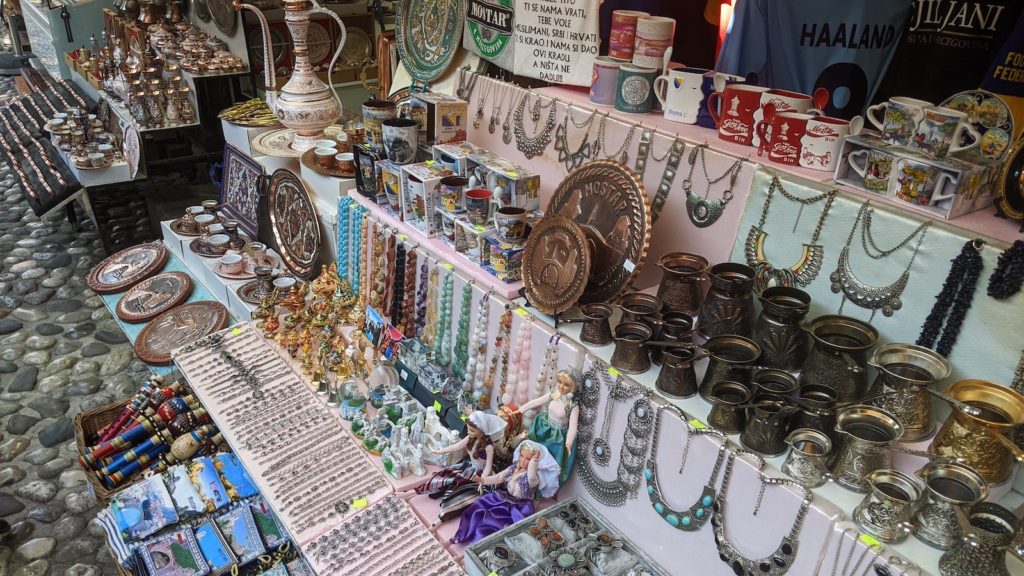
3. Walk through the market.
On both sides of the bridge there’s a market with jewelry, coffee sets, lamps, clothing, and other beautiful souvenirs. Some of the products are handmade. This area can be very crowded though and is less busy at night.
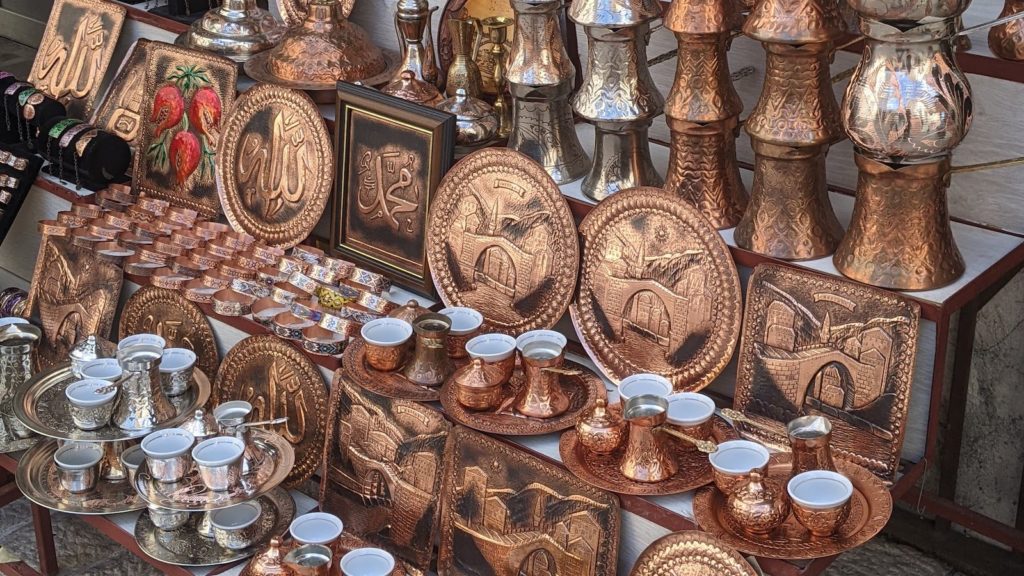
4. Visit a coppersmith shop.
In the market there are some coppersmith shops. Most of these have been family owned businesses for generations. You might be able to see them working on copper plates or jewelry. These are great souvenirs to buy because they were handmade right in Mostar.
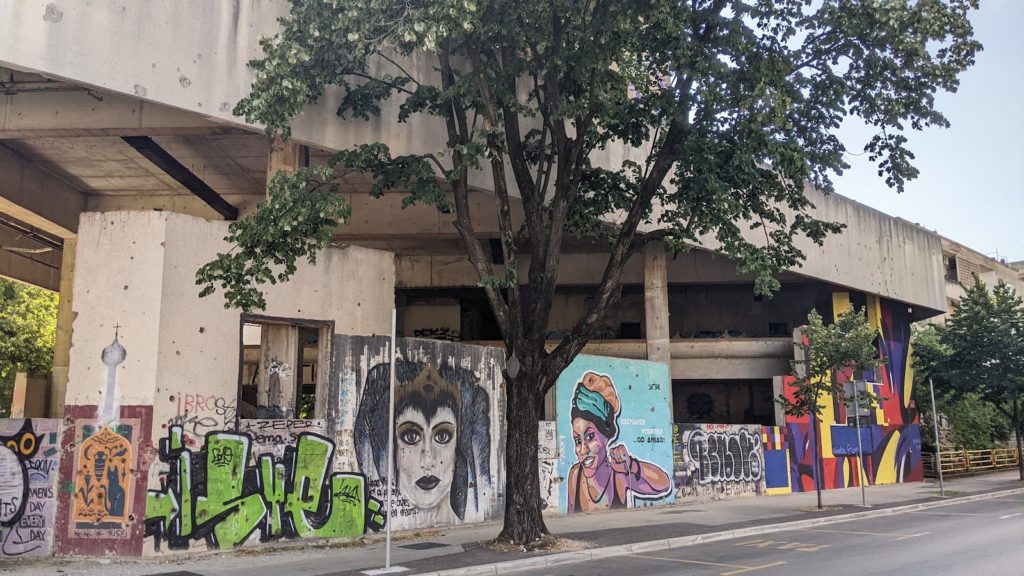
5. Take a free walking tour.
The free walking tour in Mostar was my favorite walking tour I’ve done in any city. I did this walking tour with Sheva. He had so many interesting stories and was very knowledgeable. The tour went longer than scheduled, but I didn’t realize because he was so fascinating to listen to.
Remember that “free” walking tour means you don’t pay to sign up, but you are expected to tip. I usually tip $10 and would tip $20 if I had more spending money.
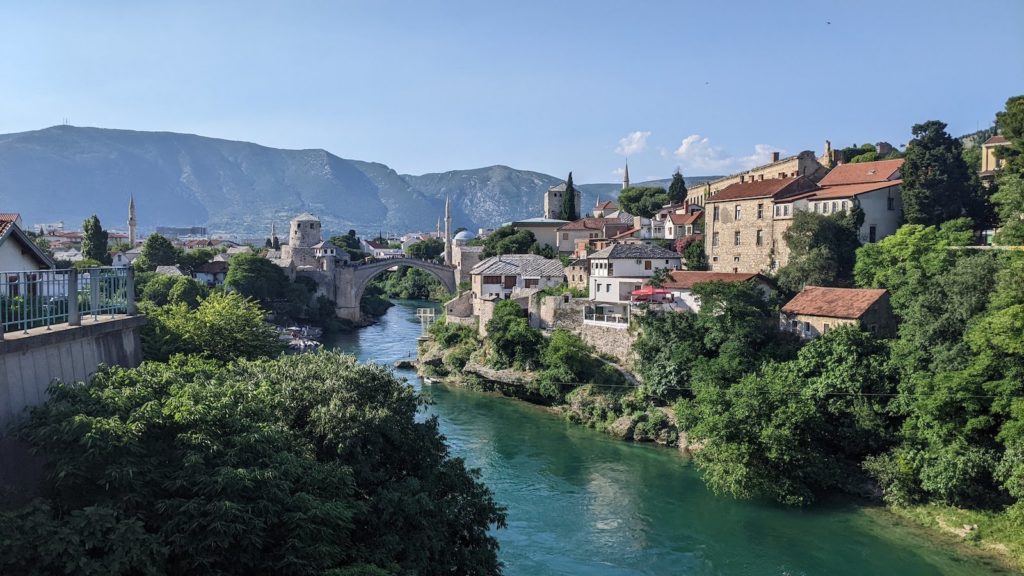
6. See the view from Lučki Most.
This bridge is on the edge of the Old Town and gives you a great view of Stari Most, Old Town, and the Neretva. It’s also not very crowded.
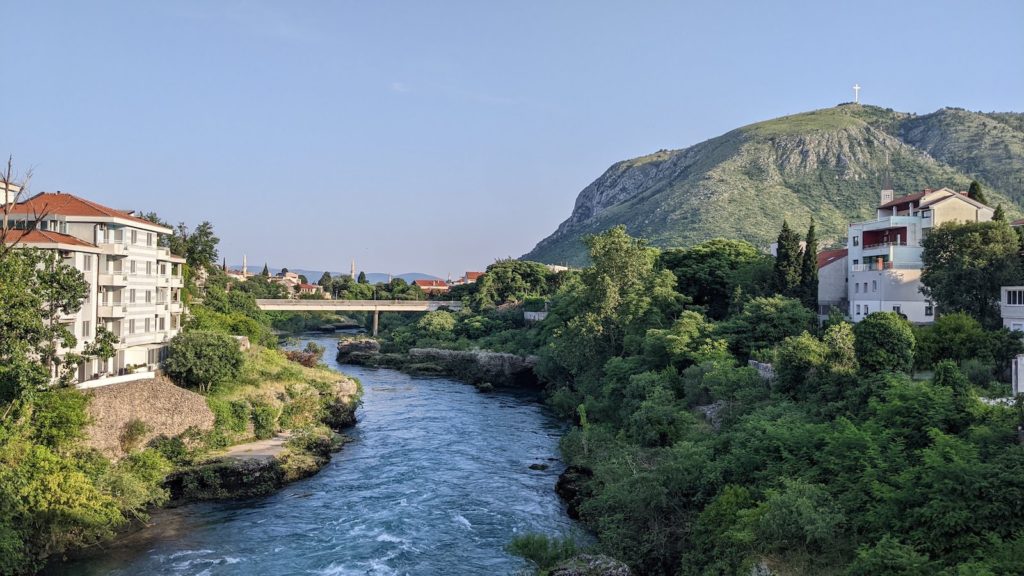
7. See the view from Most Musala.
This bridge is just outside of Old Town, on the opposite side from Lučki Most. Cross the bridge for a beautiful view of the Neretva and the mountains, with mosques and other buildings from Old Town in the background.
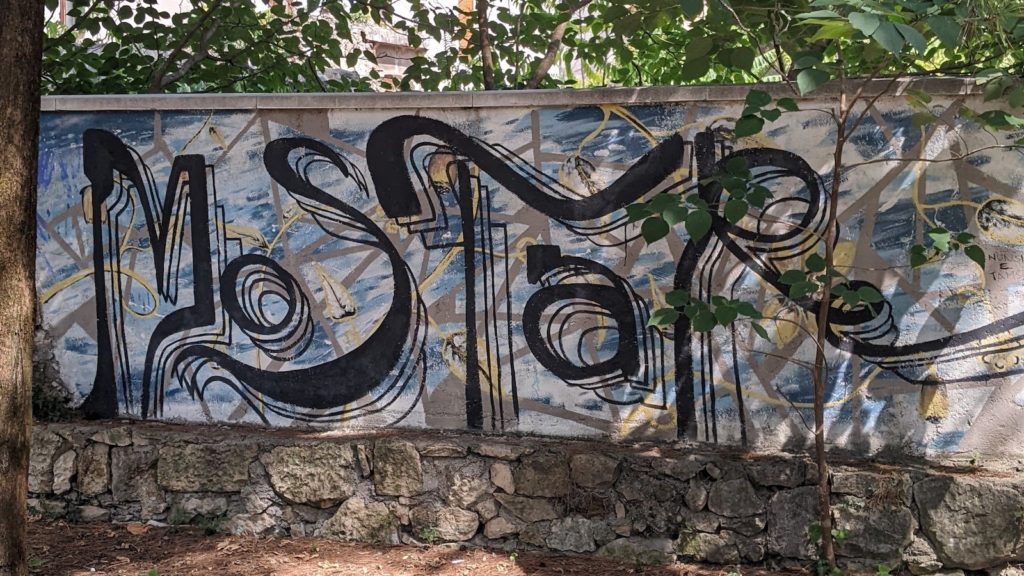
8. Look at the street art.
Mostar is one of the best cities in Europe for murals and street art. You’ll find beautiful paintings everywhere throughout the city. The most are on this building and on apartment buildings along Alekse Šantića. Use this map to find them or check out my gallery of Mostar street art.
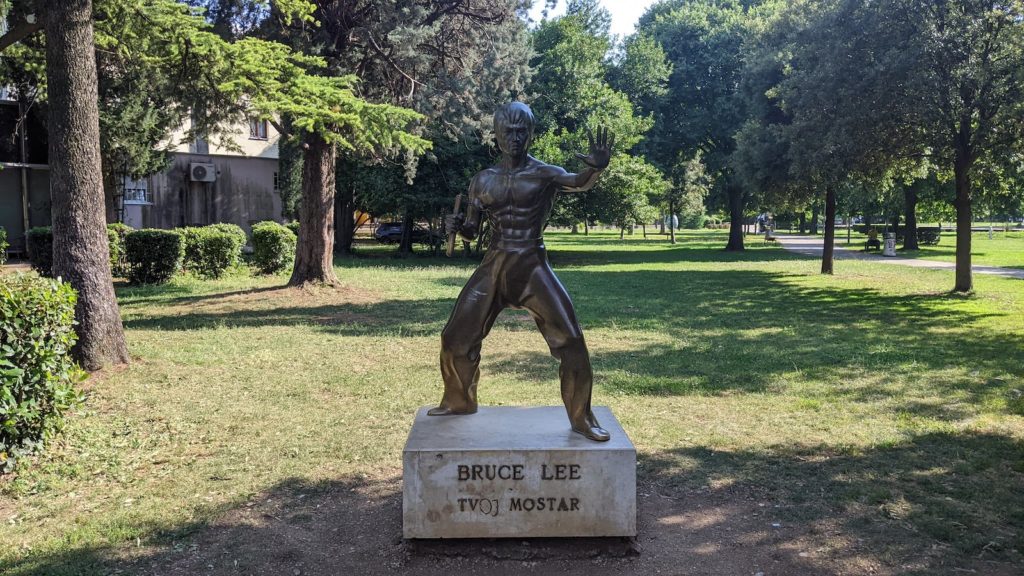
8. Walk through Park Zrinjevac.
This is a nice park with lots of murals, a fountain, and a playground. It’s a great place to sit and eat your burek. There’s even a Bruce Lee statue for some reason.
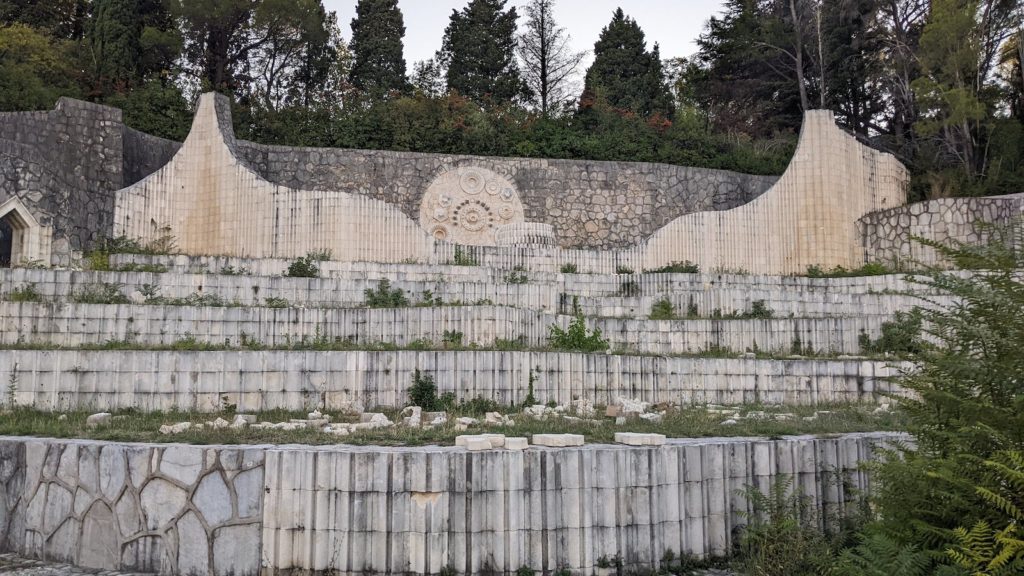
9. Visit the Partisan Monument.
The Partisan Memorial Cemetery was built in 1965 in honor of the Yugoslav Partisans of Mostar who were killed during World War II. Part of it was destroyed in 2003, but it’s still a unique monument with interesting architecture. There’s also a great view from here.
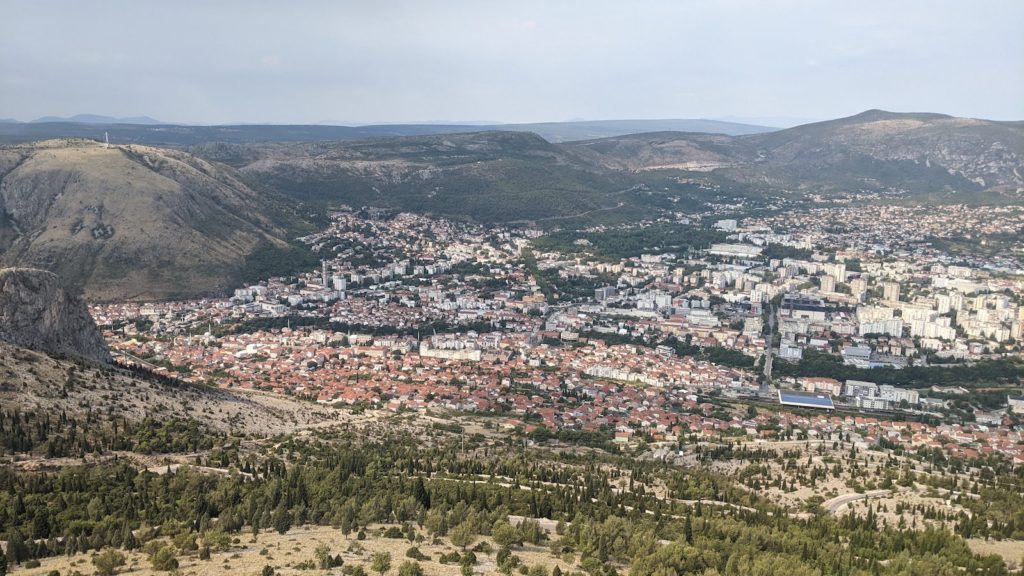
10. See the view from Skywalk Fortica.
Here you can walk on a glass skywalk that overlooks the whole city. I saw this viewpoint as part of a tour. You can also take a taxi here, or drive if you rented a car.
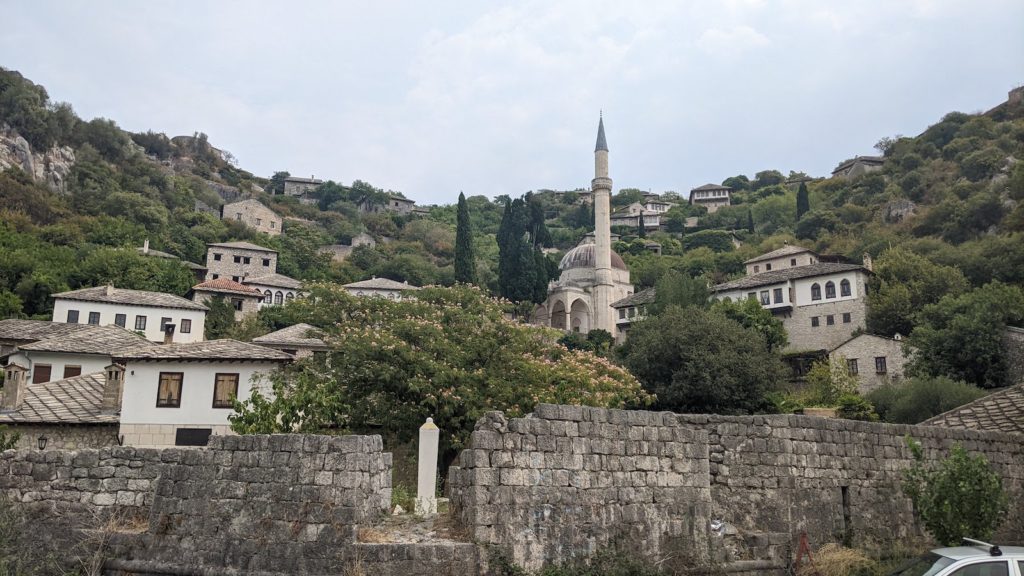
11. Explore Hercegovina.
There are a few Hercegovina tours available that explore the region. I did one that went to the skywalk, Blagaj, Počitelj, and Kravice Waterfalls. Blagaj and Počitelj are two villages that I really enjoyed, but in my opinion Kravice Waterfalls are overrated. It was very crowded and there are restaurants along the entire shoreline. So there wasn’t any room to relax and enjoy the falls.
There are also other tours of Hercegovina including wine tasting.
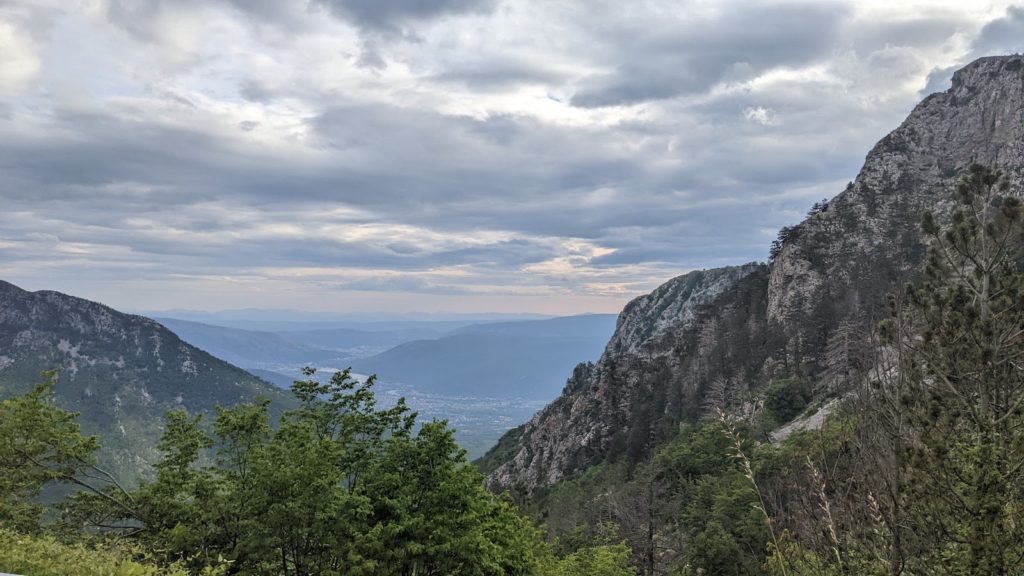
12. See the mountains from Rujište.
If you’re renting a car, you can drive to the mountains nearby. Rujište is a ski resort in the winter. In the summer you can eat dinner with a gorgeous view and go for a short hike.
Food and Drinks in Mostar
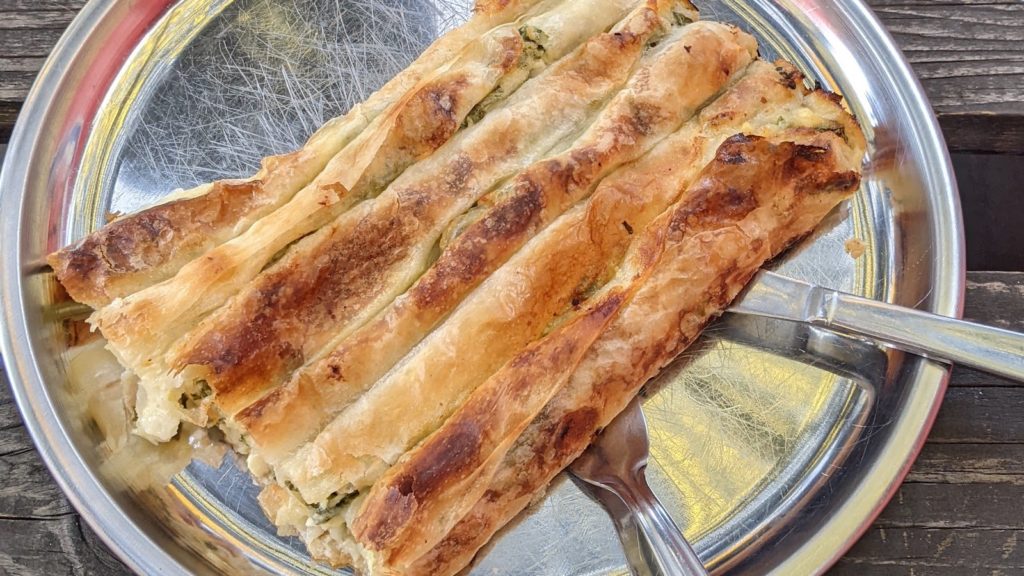
1. Burek
Burek is probably the most well-known food in the Balkans, and it’s the best in Bosnia and Herzegovina. Burek is a flaky pastry filled with meat. There are also versions without meat that have cheese, potatoes, spinach, or even pumpkin. In other Balkan countries these are called “Burek with cheese” or “Burek with potato,” etc… But in BiH they each have their own name.
- Sirnica – with cheese
- Zeljanica – with cheese, spinach, and other greens
- Krompirača – with potato
- Tikvara – with pumpkin (seasonal)
You can get burek and the vegetarian versions at a pekara (bakery) or a buregdžinica. It’s also called pite.
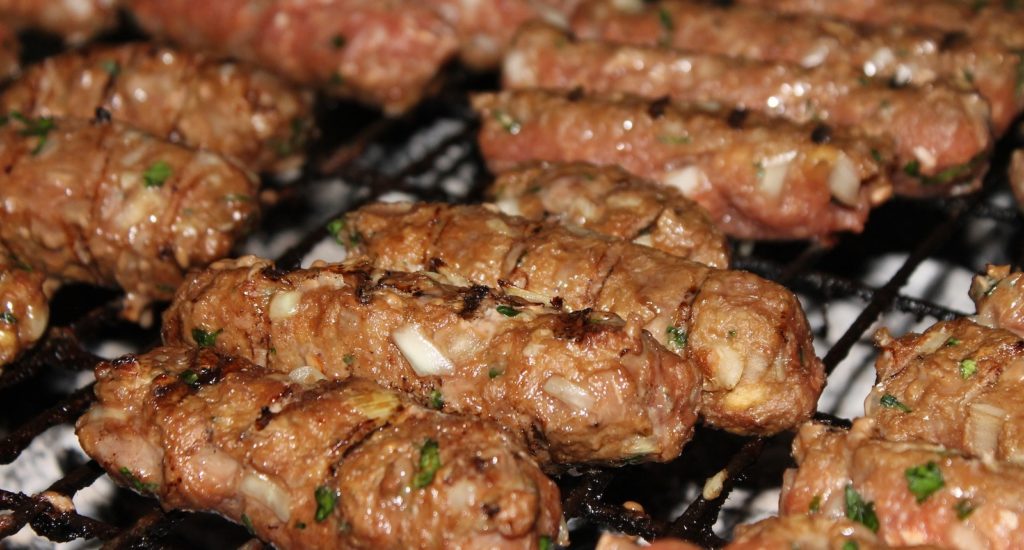
2. Ćevapi
Ćevapi is another popular Bosnian food. These are small, mixed meat sausages that you eat with onions. You can eat them on a bun or by themselves. You can find these at almost any restaurant in Mostar.
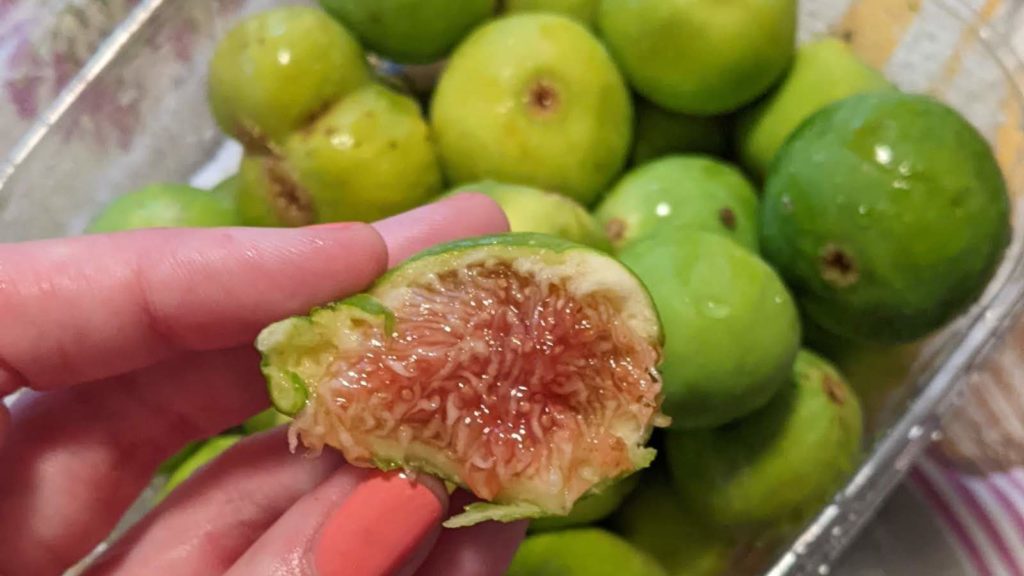
3. Fresh, local fruit
Late July-August is the best time to visit for fresh fruit. Fig, pomegranate, and other fruit trees grow everywhere throughout Mostar and the rest of Hercegovina. In my opinion there is nothing better than fresh figs.

4. What to buy from grocery stores in Mostar.
The grocery stores in Mostar might have a more limited selection than what you’re used to, especially for fruits and vegetables. Typically stores only have fruits and vegetables that are local and in season. (Mercator Hipermarket has a wider variety than smaller stores.)
There are some local products I highly recommend that are hard to find outside of the Balkans.
- Ajvar – a dip made from red peppers and eggplants. Typically eaten with bread, but you can put it on anything. There are ljuti (spicy) and blagi (not spicy) versions.
- Zdenka – a soft cheese wrapped in triangles that’s been around since 1897.
- Štapići punjeni kikirikijem – thin pretzel sticks filled with peanut butter.
- Dorina riža – a chocolate bar with puffed rice. The puffed rice is really big, so it’s a different texture than a Crunch bar.
- Munchmallow – chocolate covered cookie and marshmallow.
- Tortica – chocolate covered wafers.
- A million brands of Nutella – the first time I visited Mostar, I was surprised to find 7 brands of chocolate hazelnut spread but no peanut butter. (I did find peanut butter later at a larger grocery store). Nutella and other brands are very popular here. My favorite is Lino Lada Duo.
5. Is there seafood in Mostar?
While there is more seafood on the Adriatic coast, you can still find some in Mostar. A lot of restaurants have grilled river trout or grilled squid. Some restaurants also have risotto or pasta with seafood.
6. Is there vegetarian food in Mostar?
Even though Bosnian food is famous for meat dishes, there are still vegetarian options.
Zeljanica and Sirnica are vegetarian and krompirača is vegan.
Most restaurants have grilled vegetables, cheese, bread, and ajvar. This might not sound like much but the bread and cheese here is so good. And I could easily eat bread and ajvar every day. Some restaurants will also have pizza, pasta, or risotto with vegetables.
You’ll also see salata on most restaurant menus, but it might not be the salad you’re used to. Sometimes this is just cucumbers and tomatoes. It’s usually better as a side than a full meal.
The cafe Tecó has more vegetarian and vegan options than most of the restaurants in Mostar. They have a hipster vibe and have smoothie bowls, veggie burgers, and even vegan desserts.
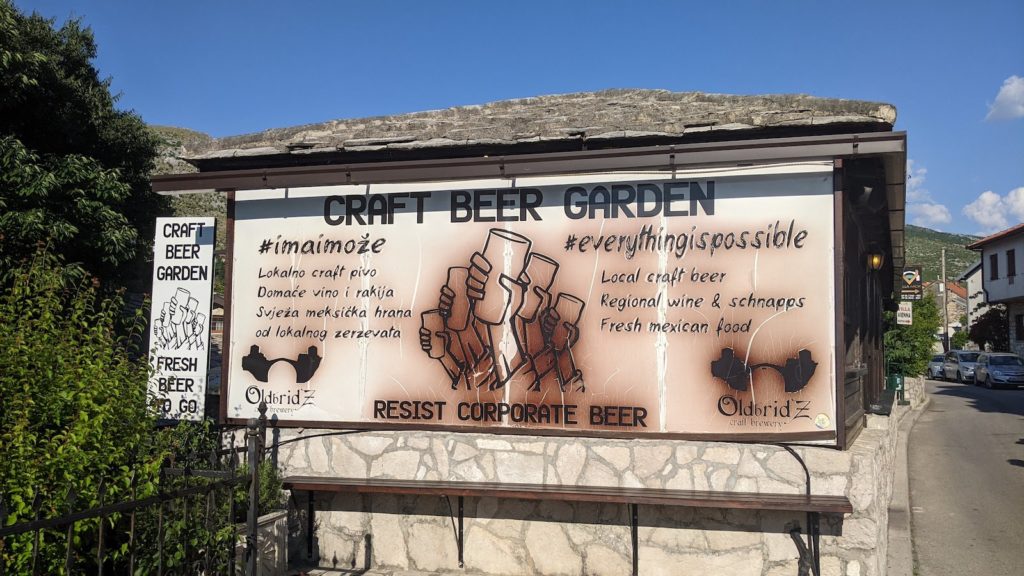
7. What to drink in Mostar.
- Mineral water – Sparkling water is popular throughout Europe, but the best mineral water is in Bosnia and Herzegovina. Sarajevski Kiseljak is my favorite and has really strong carbonation. It will still have bubbles the day after you open it.
- Yogurt – A lot of locals like to drink yogurt when they eat burek. This is a plain yogurt that’s not sweet or fruity.
- Fresh juice – Elderflower and pomegranate juices are local to this region and so delicious.
- Bosnian coffee – Coffee culture is very big in Bosnia and Herzegovina. People will sit for hours chatting and drinking coffee. While most locals drink espresso, you should also try Bosnian style coffee, which is brewed differently.
- Wine – Herzegovina is known for great wine. The “vina” in Herzegovina even means wine. Be sure to try Žilavka if you like white wine. When it’s hot outside, order a gemišt, which is white wine and mineral water. You can also order a liter of wine and a liter of mineral water.
- Beer – There are several Balkan beers to try including Mostarsko, Karlovačko, Ožujsko, and Jelen. For craft beer, check out the OldbridZ beer garden, by the Old Bridge of course.
- Rakija – Your trip to the Balkans is not complete until you’ve tried rakija. This is a popular local spirit that’s about 40% alcohol (or higher). It’s made with plums or other fruits and is often homemade.
- Višnjevača – If rakija is too strong for you, try višnjevača. This cherry liquor is sweet and easy to drink. There are also similar liquors made with oranges or walnuts.
Frequently asked questions about Mostar
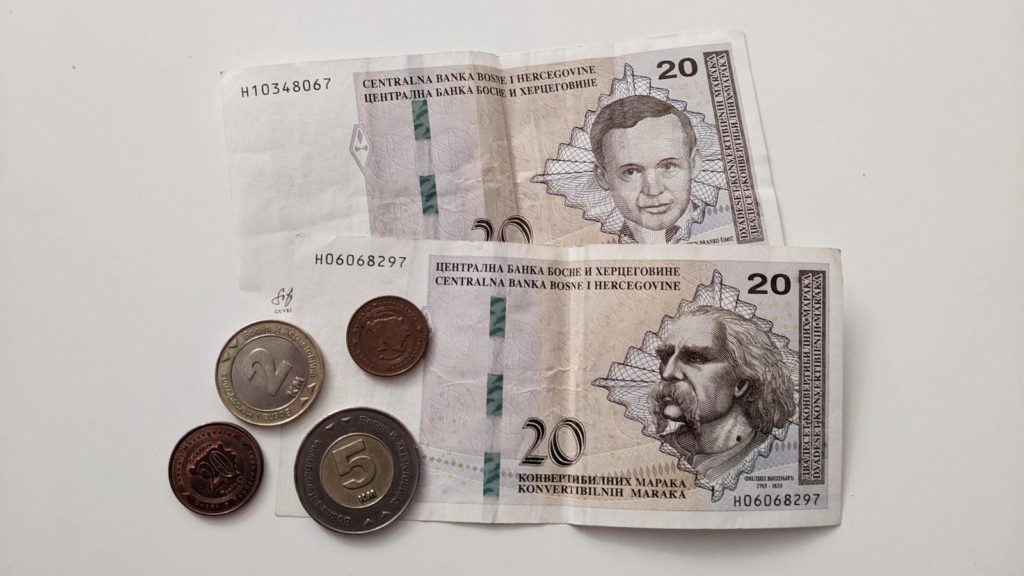
1. What currency is used in Mostar?
The currency in Mostar, and all of Bosnia and Herzegovina, is Bosnian marks (BAM) aka convertible marks (KM). The exchange rate is about 2 marks for 1 euro. Some shops in the tourist areas also accept euros.
Most businesses in Mostar are cash only. You might want to read these tips for saving money at ATMs.
The prices in Mostar are usually a lot less expensive than other areas of Europe, but this is because the average wages are also lower here, around 600 euros/month. So don’t made a big deal about how cheap it is in public.
2. What languages are spoken in Mostar?
The three official languages of Bosnia and Herzegovina are Bosniak, Croatian, and Serbian. These languages are very similar and essentially the same thing from a tourist perspective.
The alphabet has some differences from the English alphabet. Here are a few letters you should know:
- J – pronounced like y
- C – pronounced like tz
- Č – pronounced like ch
- Ć – also like ch but softer
- Š – pronounced like sh
- Ž – pronounced like the g in mirage or the s in measure.
- Learn more in this video.
It’s also helpful to know a few basic words:
- Hvala – thank you
- Dobar dan – good day (Similar to French, it’s common to say “good day” (or good morning/evening) instead of “hello” when greeting someone.)
- Dobro jutro – good morning
- Dobro večer – good evening
- Laku noć – good night
- Živjeli – cheers
3. Do people speak English in Mostar?
Some people speak English, especially younger people. And more people speak English in the touristy areas.
4. What’s the weather like in Mostar?
Because it’s in a valley, it can get very hot in Mostar. Summers are usually around 35 degrees celsius (around 95 degrees fahrenheit). It can feel hotter in the sun. It’s usually sunny with occasional rain or thunderstorms.
Winters are cool and very windy. Sometimes it snows, but not very much.
5. Is the tap water safe to drink in Mostar?
The tap water is safe to drink, and even tastes better than the water in a lot of other countries.
6. How do you get around in Mostar?
Mostar is a small town so you can walk almost everywhere. You can also take a taxi, or rent a car if you want to explore more of Herzegovina.
7. How to get to Sarajevo, Croatia, or Montenegro from Mostar?
There is a train from Mostar to Sarajevo, but the times can be inconvenient. You can also take a bus to Sarajevo or other nearby cities like Trebinje, Zagreb, Split, Dubrovnik, or Kotor. Mostar has two bus stations, so make sure you go to the right one.
The bus system in the Balkans is a little different than other parts of Europe. To put your luggage under the bus, you pay the driver one euro (or two marks) per bag. There can also be a fee to print your ticket at the station. (If you buy your ticket online, it will say if it needs to be printed.)
When crossing the border, you’ll need to go through passport control. Sometimes everyone gets off the bus and each person goes to the passport control booth. Sometimes everyone stays on the bus and you give your passport to the driver who takes them all to passport control. You’ll also have two passport checks – one for leaving the country and another for entering the next country.
8. How do you get to the airport from Mostar?
Mostar is in the middle of three airports – Dubrovnik, Split, and Sarajevo. Each is about a two and a half hour drive. It can be hard to find a direct bus to the airport, so if you’re not renting a car, it’s probably easier to visit Mostar in the middle of your Balkans trip.
Other things to know about Mostar
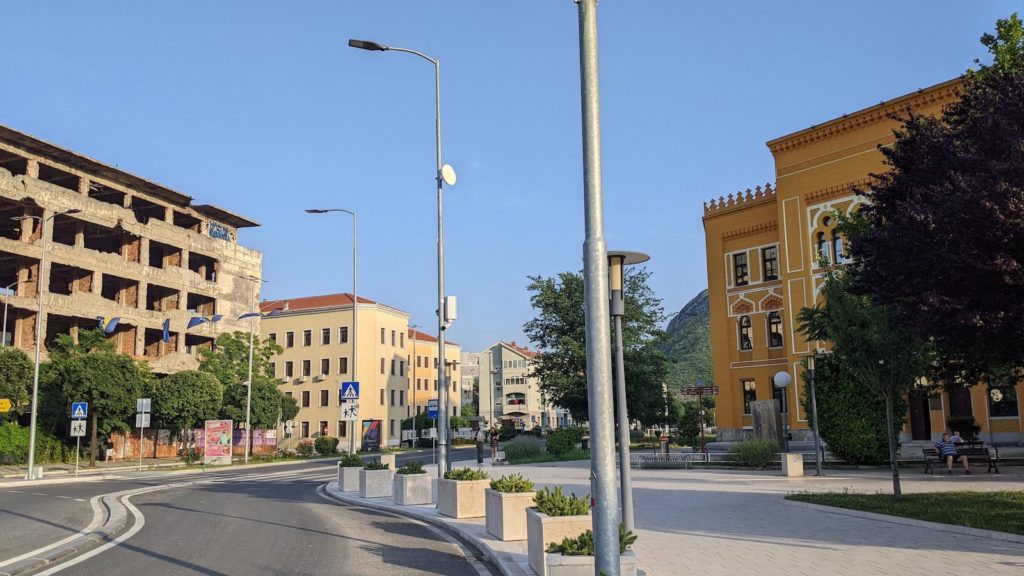
1. You’ll see some abandoned buildings.
It’s not unusual to see an abandoned building with bullet holes right next to a beautiful, newly renovated building.
2. Most stores are closed on Sundays.
Grocery stores, shops, and the stores at the mall are all closed on Sundays. Restaurants are still open. The gas stations are also still open on Sundays if you need to buy drinks or snacks.
3. You might need to turn on the water heater.
The first time I took a shower in my Mostar Airbnb, I didn’t understand why there was no hot water. Then I realized there’s a switch to turn on the water heater. It’s usually right next to the light switch.
4. The country is “Bosnia and Herzegovina,” not just “Bosnia.”
Herzegovina is the southern region of Bosnia and Herzegovina, which includes Mostar. So if you call the country Bosnia when you’re here, some people could be offended. Herzegovina is known for its beautiful nature and great wine. Bosnia and Herzegovina is also called BiH for short.
5. The city is split into two sides.
The Bosniak/Muslim side of the city is on the east and the Croatian side is on the west. Most of the tourist areas are on the east side. You’ll notice all the mosques are on the Bosnian side and there are more churches on the Croatian side. As a tourist, you don’t need to worry about the difference. But it is helpful for knowing the context and history of the city. You’ll learn more about this on the walking tour.
6. You’ll hear a lot of different stories about the war.
I took a few tours and each tour guide had a different story about what happened during the war. And these were also very different from the stories I heard in Croatia. A lot of locals, especially young people, just want to move on. Some people think the tour guides might have embellished certain details to get more tips.
Go to the museums or do your own research if you want to learn more. Keep in mind different sources will have different perspectives.

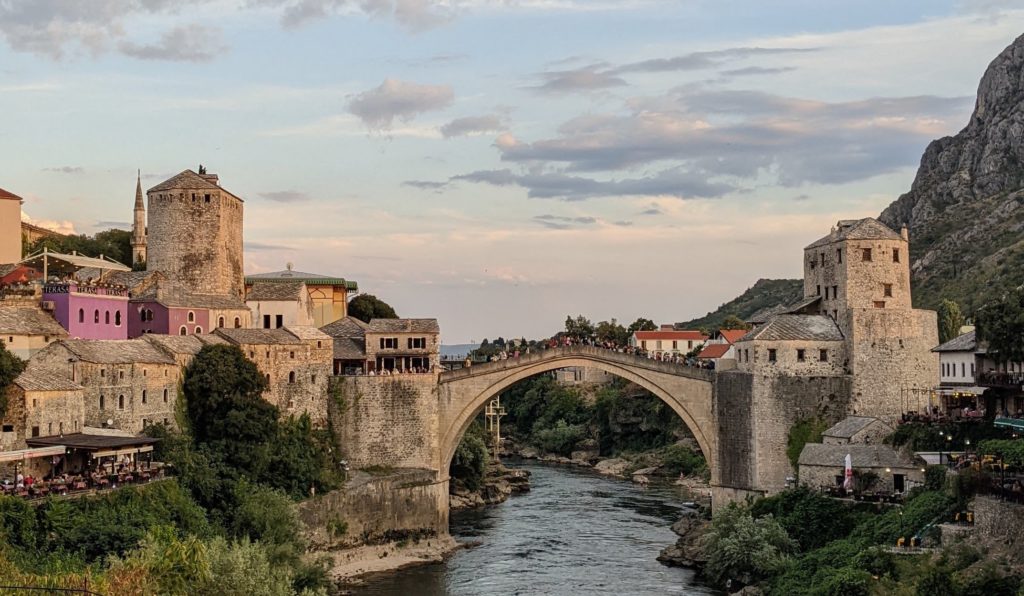
Very nice touch adding pronunciation for characters that do not commonly appear in English and a little tour of the local grocery store!